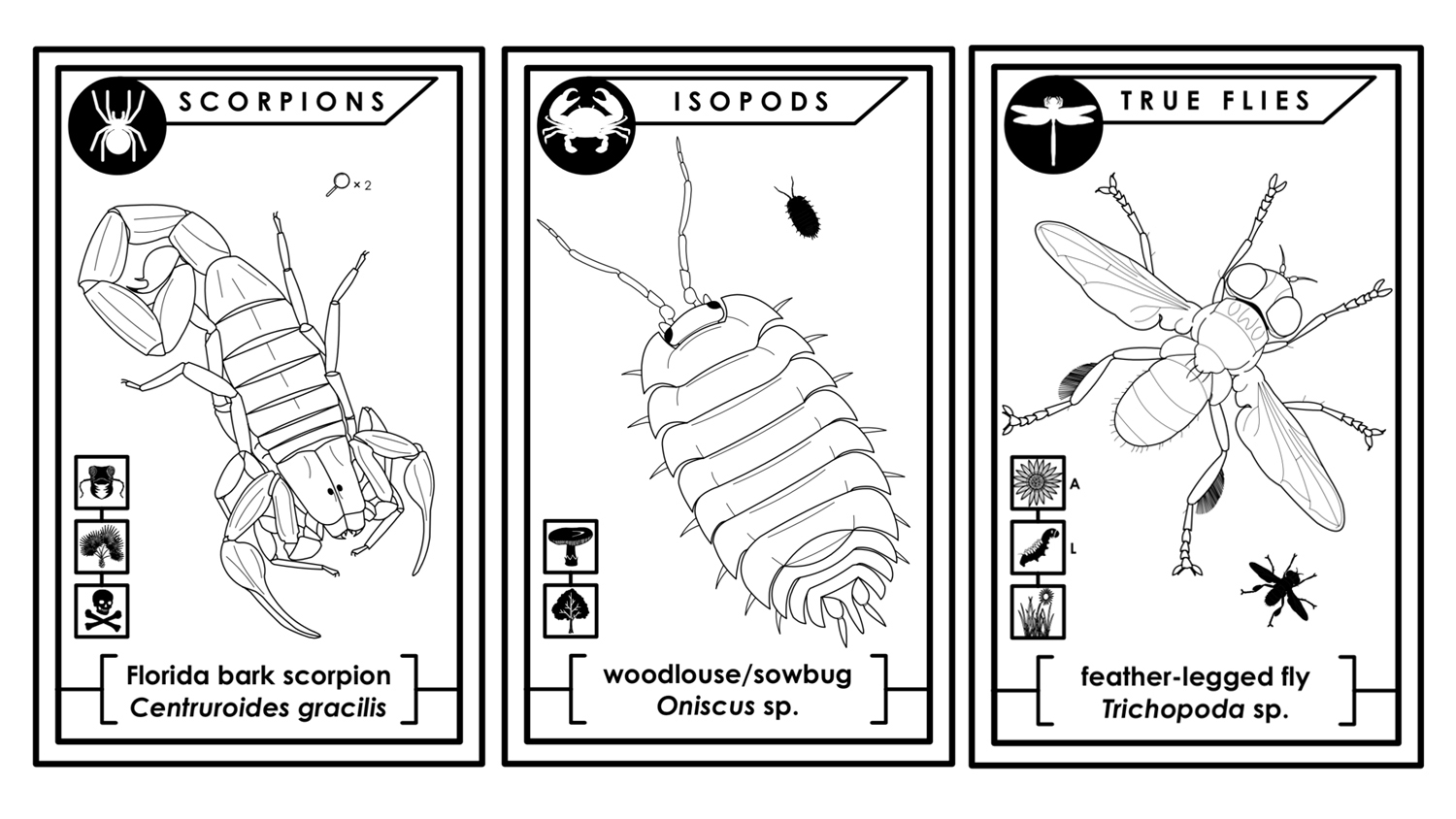If You Love Insects and Other Arthropods, We Have the Coloring Book for You

Most coloring books focus on drawings of cartoon characters for kids or peaceful designs for adults. If you’ve been looking for a (free) coloring book that focuses on the diversity of arthropod life – from insects to arachnids – we have a treat for you.
Matt Bertone, the director and diagnostic entomologist of NC State’s Plant Disease and Insect Clinic, created a coloring book called “Arthropods! A Coloring/Learning Guide for Young Naturalists.” You can download the coloring book, for free, here.
The book may be particularly handy for anyone seeking learning or enrichment activities for kids to engage with at home.
“I started this book in 2008, but never really finished it,” Bertone says. “I had recently completed my Ph.D. and hadn’t found my professional path yet. So, I considered making and selling coloring books. More than 12 years later, I have a position I really enjoy, helping people identify and understand the arthropod species that live all around us. Recently there was a tweet about what people would have done if they didn’t get their job, and I chimed in about drawing coloring books, promising to share this. Then I figured with lots of people at home with kids, that this might be the most opportune time to give a little back to folks and release it for free.”
In addition to illustrations for coloring, the book offers information for young readers about arthropod diets, habitats and diversity. However, Bertone notes that the book was written in 2008, so some of the terminology may have changed. In other words, taxonomists, please don’t get upset with him.
We recently took time out with Bertone to learn a little more about how (and why) a Ph.D.-trained scientist made a coloring book. (It’s not even his first one!)
The Abstract: What was the impetus for making the book?
Matt Bertone: I had always been into drawing animals and doodling, long before I got into photography. [Editor’s note: Bertone’s photography of arthropod life has appeared in news outlets such as National Geographic and the New York Times.]
After a friend turned me on to vector drawing software, I was hooked and started tracing or drawing critters. I had actually made a coloring book for our graduate student association even longer ago (it’s called “Interesting Insects A to Z”), but I had drawn it by hand. The software I used to make “Arthropods!” gave me more options, and it was a lot of fun.
Many of the main drawings are traced from images or pics of specimens, but then edited to make them look better or to add body parts or more details. My real accomplishment was drawing the symbols and icons free-hand, and I’m pretty proud of them. I just wish I had had more time to make pages on which to use all of them!
TA: Do you have any training in art?
Bertone: Nothing formal, but like I said I’ve been into drawing since I was young. In fact many people are surprised to find out I would have likely gone into some kind of graphic design if I hadn’t had my passion for entomology and zoology. Also, I always thought I could just draw animal stuff and combine the two passions. However, the past 10 years or so I haven’t drawn much, and I’ve mostly been focused on photography.
TA: How did you decide what subject matter to include? (And what not to include?)
Bertone: So that’s one of the caveats about this coloring book – I never “finished” it! I was planning many more pages – an introduction, etc. – but then lost steam and things got busy with my first child and a new postdoc. I’m so glad, looking back, that I started with many different groups being represented, as it doesn’t seem like it was actually that unfinished. It could have been just dozens of flies and spiders. But, now that I think about it, that wouldn’t be so bad.
TA: Why include barnacles, but not include other crustaceans like crabs or lobsters?
Bertone: I don’t exactly remember why I prioritized a barnacle over crabs and shrimp, for example. It was probably part “this is something that is never in coloring books,” and part “most people don’t know that barnacles are arthropods, related to crabs and lobsters.” It does seem weird, though, and it wouldn’t have seemed that unusual if I’d actually made more pages.
TA: Has any of the material in the coloring book changed since you created it in 2008?
Bertone: I am probably going to update it for any major mistakes, but the link will still work. As far as taxonomy, the current version uses “Insecta” or “Hexapoda” interchangeably as the Class for some of these creatures, and the meaning has been revised in recent years. Apparently I couldn’t make up my mind back then. Or I started with one term, likely Insecta, and then switched when Hexapoda became more widely understood and accepted. Also, there are some spelling errors and the whole thing should have been sent through the editorial process – as I know you will appreciate.


